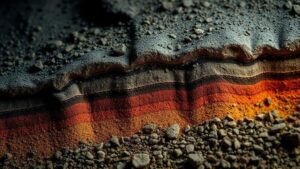Filing a Tunnel Claim: Exploring Subsurface Mineral Rights Legally
Filing a Tunnel Claim: Exploring Subsurface Mineral Rights Legally
Filing a tunnel claim involves a multifaceted understanding of subsurface mineral rights, land use, and legal frameworks. This article provides an in-depth exploration of the process, legal requirements, and implications surrounding tunnel claims, which are essential for individuals or entities seeking to extract valuable minerals beneath the land.
Understanding Tunnel Claims
A tunnel claim is a specific type of claim primarily used to extract minerals located beneath the surface of the earth using tunneling methods. Unlike traditional placer claims, which typically involve surface collection, tunnel claims enable mining operations to extend underground, accessing rich mineral deposits.
In the United States, the General Mining Act of 1872 governs the filing of mining claims, including tunnel claims. Under this act, miners can claim rights not only to the surface but also to minerals found below it, provided they adhere to specific regulations.
Legal Framework and Requirements
Filing a tunnel claim requires adherence to several legal statutes and regulations. The following steps outline the essential requirements:
- Eligibility: To file a tunnel claim, the claimant must possess the right to access the land, whether through ownership, lease, or other legal means.
- Claim Location: The specific location of the tunnel claim must be identified using accurate surveys. This includes boundaries that are within 300 feet of a vein.
- Filing Documentation: Claimants must file essential documents with the Bureau of Land Management (BLM), including a notice of location and a detailed map illustrating the claim.
- Proof of Assessment Work: Claimants are typically required to perform a minimum amount of assessment work annually to maintain the claim.
- Fees: Filing fees are required, along with annual maintenance fees to keep the claim active.
Real-World Applications
Tunnel claims are particularly relevant in regions rich in minerals such as gold, silver, and copper. A notable example comes from the state of Nevada, which boasts a significant number of tunnel claims due to its favorable geology. The Comstock Lode, discovered in 1859, is an excellent illustration of successful tunnel mining leading to the extraction of substantial mineral wealth.
In a recent case study, a mining company filed a tunnel claim in the Sierra Nevada mountain range, allowing them to access gold deposits found approximately 400 feet underground. Their ability to extract minerals economically demonstrated the benefits of filing a tunnel claim versus more traditional mining methods.
Challenges and Considerations
While the prospect of filing a tunnel claim can be enticing, it also presents various challenges. Key considerations include:
- Environmental Regulations: Compliance with environmental laws is crucial. Proper assessments must be conducted to mitigate the environmental impact of mining operations.
- Legal Disputes: Conflicts over land rights can arise, especially if the surface rights differ from the subsurface rights. Legal disputes can lead to lengthy and costly litigation.
- Financial Risk: The initial investment for drilling and tunneling can be substantial, and there is no guarantee of finding economically viable minerals.
Conclusion and Actionable Takeaways
Filing a tunnel claim can be a lucrative avenue for accessing valuable mineral resources. But, potential claimants should conduct thorough research and consider legal consultation to navigate the complexities of the mining laws effectively. Also, engaging with environmental regulations and assessing market demand for the mined resources can significantly impact the success of a tunnel claim.
- Research and gather all necessary documentation to initiate the claim process.
- Consult legal experts to ensure compliance with both mining laws and environmental protections.
- Stay informed about market trends and mineral value to make informed financial decisions regarding tunnels.



